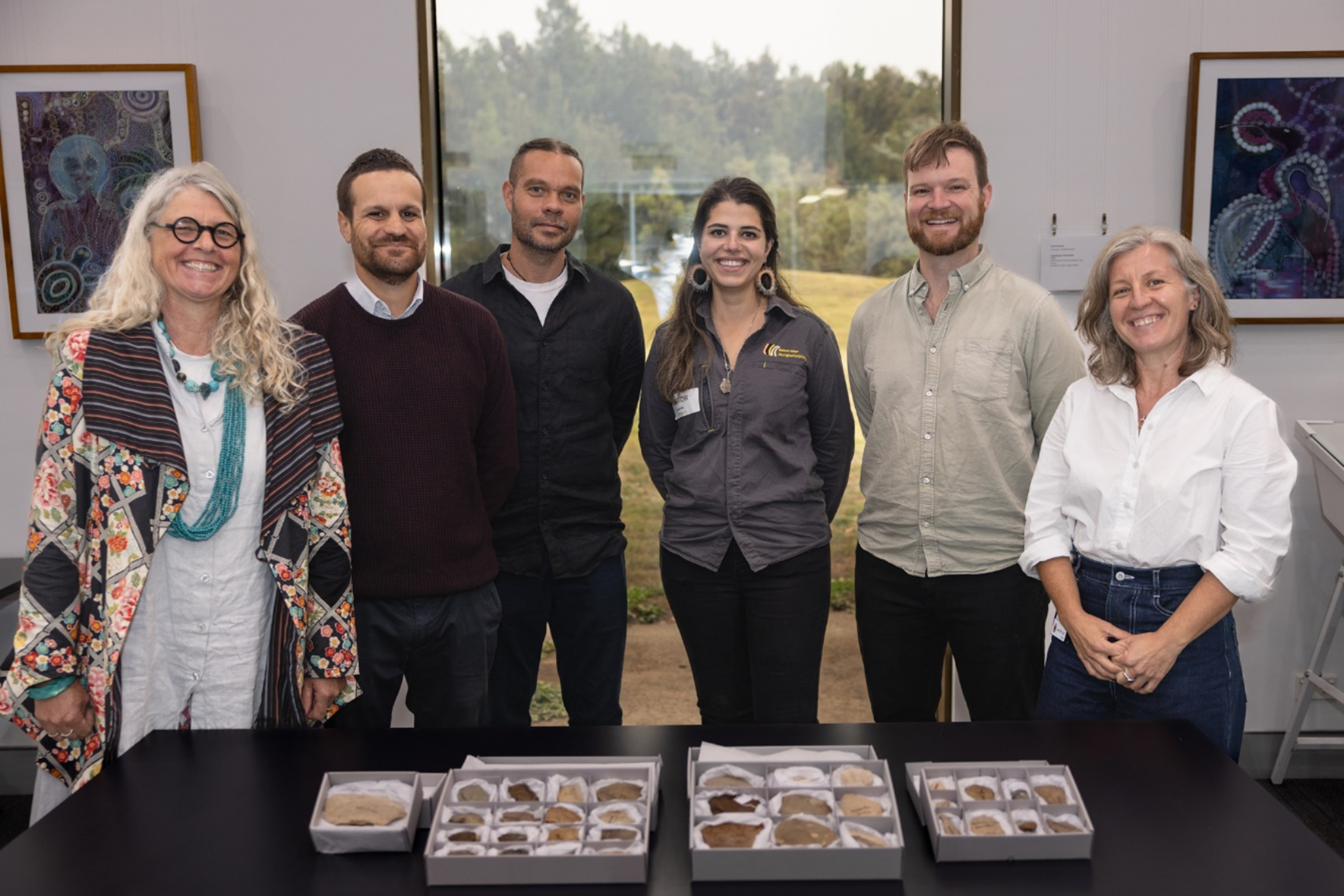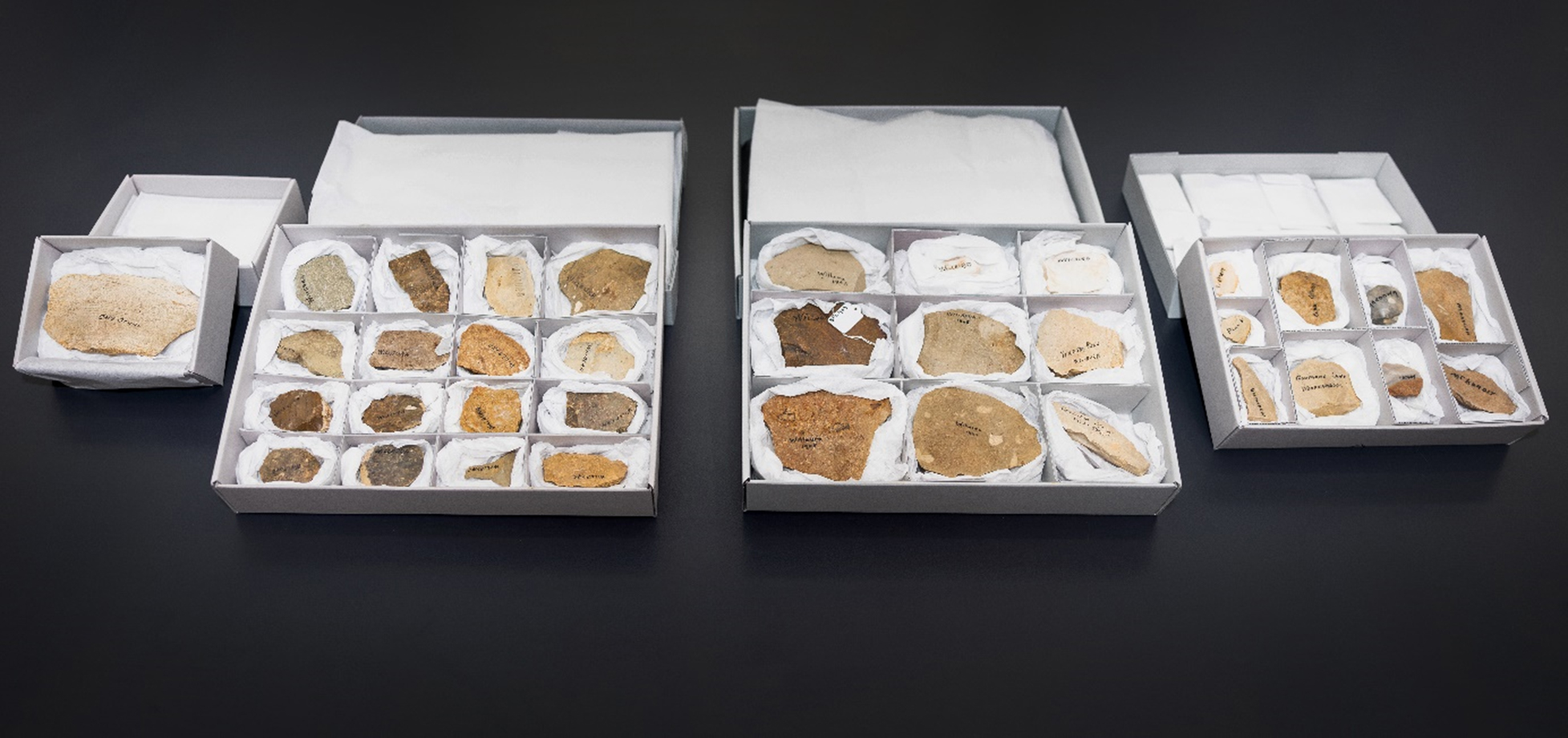AIATSIS recently returned thirty-five stone artefacts back to the Eastern Maar community.
The tools were part of an extensive collection of stone artefacts that were returned to Australia from The Israel Museum, Jerusalem, as part of the AIATSIS-led Return of Cultural Heritage (RoCH) program. The returned artefacts include stone tools, grindstones, and other materials.
The collection was donated to the Museum in the 1970s by Mr Carl Shipman of Toorak, Victoria, and arrived in Australia in November 2020 to be cared for at AIATSIS before being returned to Country. The RoCH project team has conducted desktop provenance research on the collection and identified several sub-collections, one belonging to the Eastern Maar community. These sub-collections have been established based on Shipman's limited geographical provenance information at the time of donation and the locations inscribed on the artefacts in coloured ink.
The AIATSIS team researched the material and engaged with the Eastern Maar Aboriginal Corporation. Throughout this process, the RoCH team confirmed custodianship of the material and preferences for returning and caring for the items back on Eastern Maar Country.
The Eastern Maar people are the Traditional Owners of the south-western region of Victoria. Their land extends as far north as Ararat and encompasses the Warrnambool, Port Fairy and Great Ocean Road areas. It also stretches 100m out to sea from low tide and includes the iconic Twelve Apostles.
"I would like to express my heartfelt gratitude to AIATSIS for facilitating the return of our sacred artefacts and to the Israel Museum for recognising the importance of repatriation and returning these items to our Country. As a community member and an employee at Eastern Maar, I have been dedicated to the repatriation effort for the past five months. The return of these artefacts has brought me a range of emotions, from deep pride to being overwhelmed with gratitude. Knowing that our ancestors' possessions, which were stolen, taken, or lost, have finally been returned to their rightful place on Country, brings them rest and peace. This is a significant step towards healing and reconciliation, and it is a testament to the resilience and strength of our community."
Amos Harradine – Aboriginal Heritage Officer, Eastern Maar Aboriginal Corporation
AIATSIS CEO, Craig Ritchie, commented, ‘These are tools that your ancestors once held, once used in their daily lives. They link today’s Community directly to those ancestors. The story of the stone tools is a part of the story of the First Nations peoples of this continent. At AIATSIS, our task is to help tell that story.
‘In this work in returning objects, we aim for respectful and productive relationships with those communities whose material is held in collecting institutions overseas. But we also aim for respectful relationships with the museums and other collectors who hold those materials. From respectful relationships come results that benefit all,’ Mr Ritchie said.

Returning stone tools to Eastern Maar people. Left to right: Christiane Keller, Heath Garrett, Shaun Angeles, Nathalia Guimaraes, Iain Johnston, Ophelia Rubinich. Photo: K Kerehona, AIATSIS.
Returning stone tools to Eastern Maar people. Left to right: Christiane Keller, Heath Garrett, Shaun Angeles, Nathalia Guimaraes, Iain Johnston, Ophelia Rubinich. Photo: K Kerehona, AIATSIS.
This handover to the Eastern Maar community is the third parcel of objects from the Carl Shipman collection to go back into the care of the relevant community.
AIATSIS leads the Return of Cultural Heritage program that seeks to repatriate cultural heritage materials held in collections outside of Australia.
Media enquiries: Commsmedia@aiatsis.gov.au or SMS to 0476 843 522
